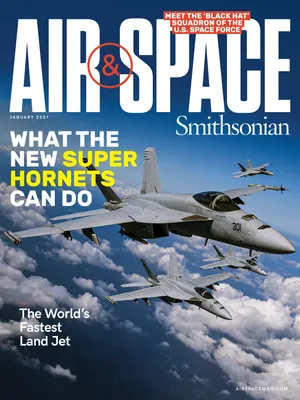For Scientists, NASA Missions Are Like Generation Ships
It takes years of preparation to produce years of data.
/https://tf-cmsv2-smithsonianmag-media.s3.amazonaws.com/filer/6a/e3/6ae39152-2070-47ce-a355-b2dad906e7a5/25b_dj2021_hubblemice_live.jpg)
I've written here before about a proposed mission I helped develop a decade ago that would have explored the hydrocarbon seas of Saturn’s moon Titan. The Titan Mare Explorer (TiME) proposal took four years to prepare, and even though the mission ultimately wasn’t selected by NASA, I’m so proud of that work and that team. It’s not uncommon for dozens of people to put in many years of work before a space mission is green-lit, let alone built and launched.
For some missions, the timeline is much longer. Had TiME been selected, four years of development would have been followed by four years of design and production before launch, plus another seven years to reach Titan. That’s more than 15 years from concept to day one on another world. Although TiME didn’t get picked, decades from now there will be a boat floating on those alien seas. Meaningful work in space builds on earlier study and is often decades in the making.
A new mission under study—the Large Ultraviolet Optical Infrared Surveyor or LUVOIR—would build the largest telescope ever sent into space. If selected by the 2020 Astronomy and Astrophysics Decadal Survey (undertaken by the astronomical community every 10 years to set research priorities), LUVOIR would be poised to make discoveries within our solar system, study exoplanets orbiting distant stars, and explore objects across the farthest reaches of space and time—after another 19 years of development, that is.
Perhaps the best known of the Great Observatories spent more than 22 years on the drawing boards before launching in 1990. Thirty years later, the Hubble Space Telescope continues to unlock new mysteries.
In science fiction, a generation ship is an interstellar ark whose crew lives out their entire lives on voyages lasting hundreds of years to reach the stars. The reality of space exploration isn’t very different—it’s often a relay race of exploration across decades.
In 1977, after eight years of development, two Voyager probes launched on a Grand Tour of the outer planets. On August 25, 2012—after 35 years and billions of miles—Voyager 1 left our solar system. Six days later, a grad student named Jamie Rankin—more than a decade younger than the spacecraft itself—arrived at Caltech and joined the mission team. Remarking on the storied program and its ranks of explorers, of which she is now a part, Dr. Rankin said that each day is like “living in a legacy of discovery.” That is the price and the promise of space exploration—lifetimes of discovery and a legacy that will ripple through history.
